Can Anglers and Trout Have Mutual Admiration for Each Other?
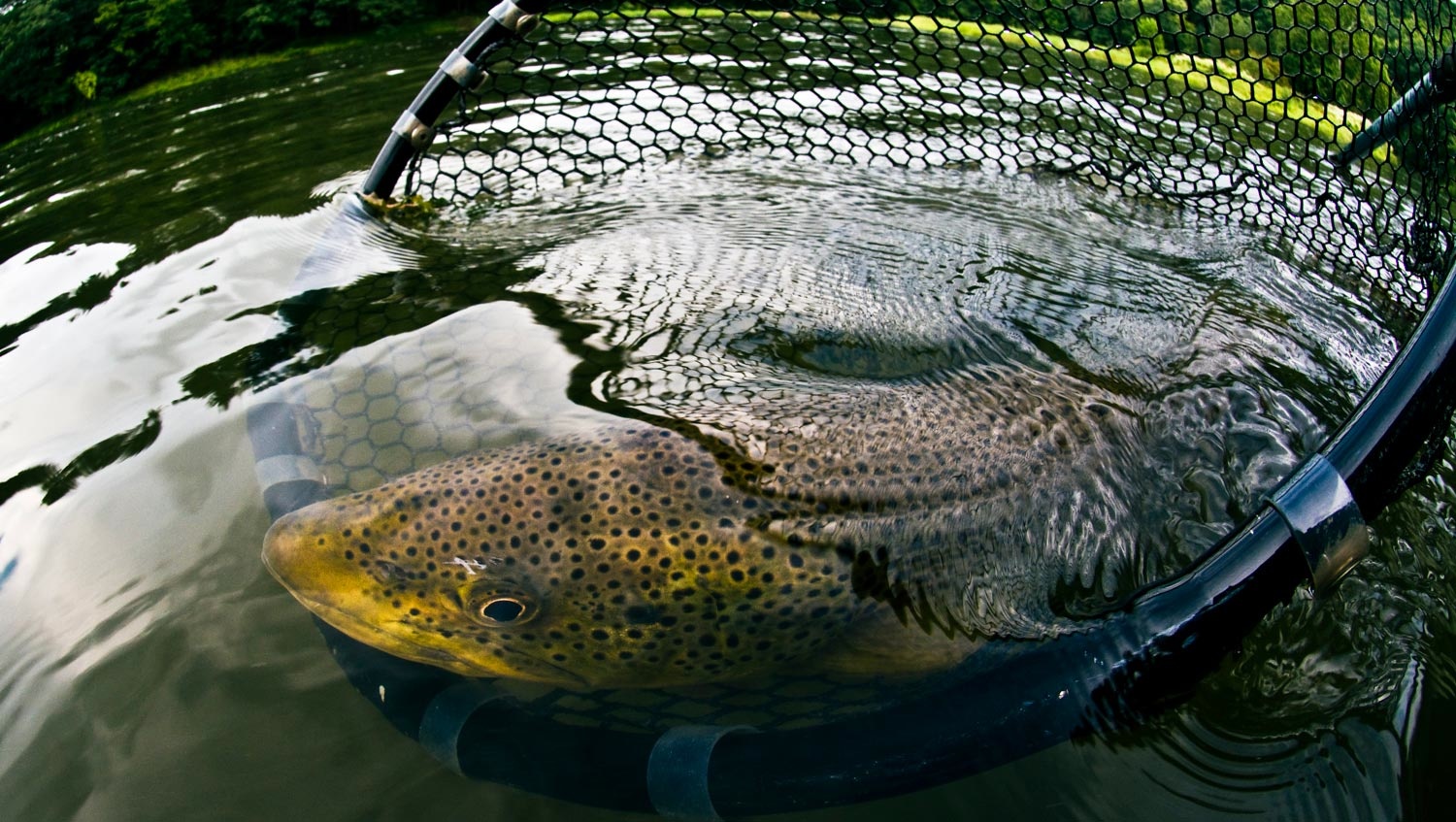
WHAT COMES TO MIND WHEN YOU LOOK AT THIS PHOTOGRAPH?
This photograph reminds me of the blissful feeling I’m overcome with, just before I release a big beautiful trout back into the wild. There’s something very special about the last few seconds that an angler spends with his/her prized catch before it’s released. Everything seems to slow down, almost as though God is making sure we have time to capture the splendidness of the moment. I like to pretend that when our eyes lock, we mutually feel admiration for each other. I respect the trout for it’s majestic beauty and the thrill of the hunt. The trout in return respects me for my angling skills and belief in catch and release.
Read More »Protect the Head of Your Nymphs with Thin Skin
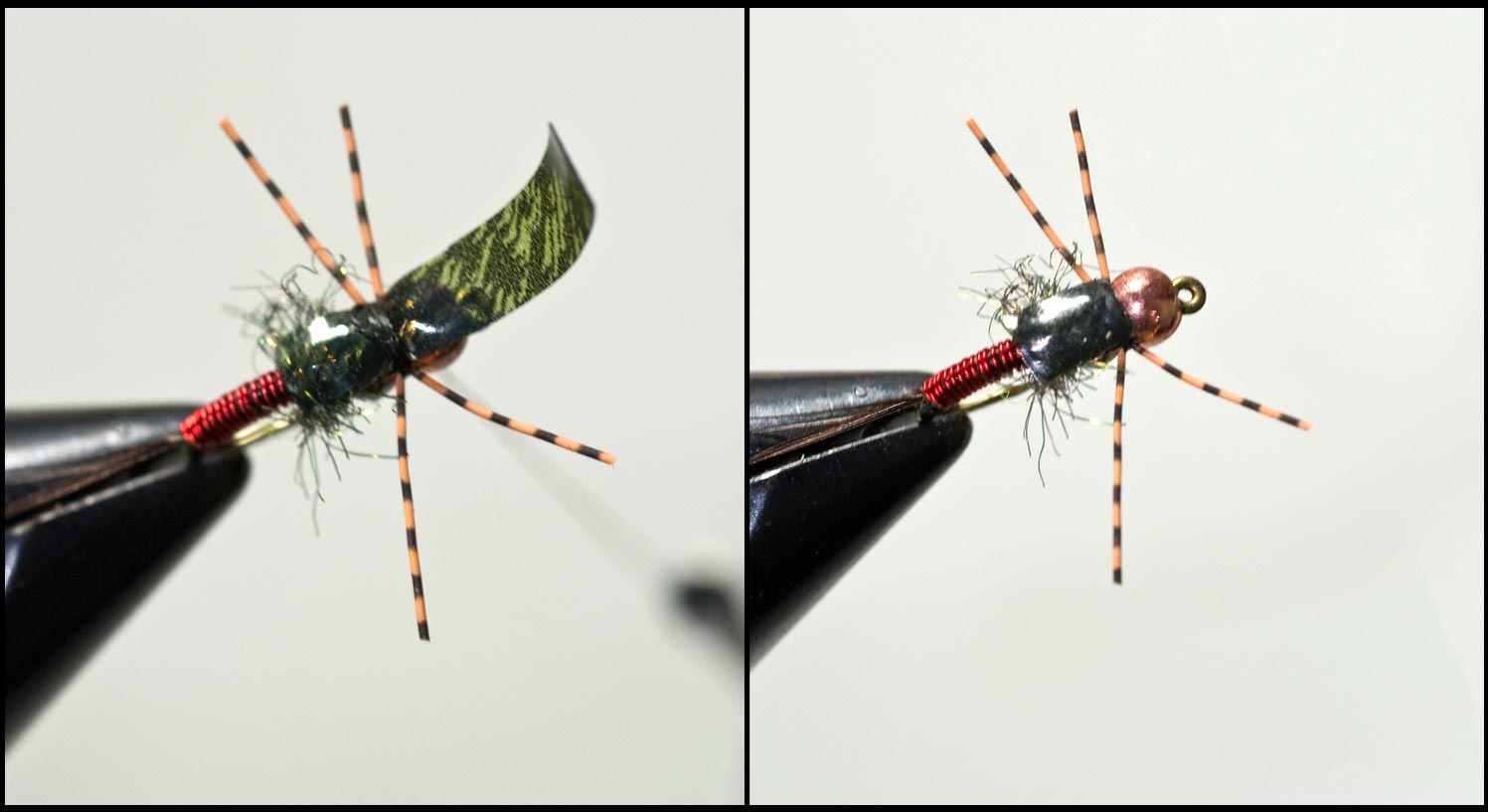
The more durable a fly, the more fish you can catch on it and the longer the life of the fly will be.
Making a point to tie and purchase your flies with durability in mind will save you time at the tying bench and keep a little extra cash in your wallet. Nymphs in general are the work horses in our fly boxes. They’re constantly getting beat up from banging against rocks on the stream bed during our drifts. One way I increase the durability of my nymphs is to finish off the heads of my flies by folding over and super gluing down a piece of thin skin. This tying technique covers the vulnerable thread at the head of the fly and makes a nice looking nymph wing case. In some cases, like with my rubber-leg copper john version above, I use
Read More »Winter Redfish, Challenge and Reward

The big winter redfish of Louisiana make anglers hearts race, but there are some serious challenges.
Hooking a thirty pound redfish on a fly is a hoot! The big bulls you find in the marsh around New Orleans this time of year are bullies. As tough a fighters as you’ll find anywhere and simply beautiful. I try to make the pilgrimage every year for the shot at great fish but it’s far from a given.
The fish themselves are aggressive. If you can put a fly close enough for them to see it, the take is usually vicious. The challenges don’t lie with the fish, but with the conditions. The winter weather is unpredictable to say the least. When I ask my friend and guide Jessie Register what the odds of having a clear day are he replied, “no better than 50/50.”
Without light, finding these fish in the dark water of the marsh is a daunting task. If the wind is disturbing the surface of the water, forget it. You may still find a fish tailing in shallow water but you’ll work for it. Of course, targeting the smaller fish who are more predictable is always a good option but light is a huge plus when you’re hunting the big boys.
It’s not uncommon to have days where fishing
Read More »Competitive Fishing and Responsibility

This article, like many I’ve written, began with a conversation I had with my brother, Tom. Tom and I are brothers separated by a mutual hobby. We both love to fish but in very different ways. Tom gets after bass on gear. A skill I respect but don’t especially prefer. I suck with a gear rod and it’s just not the experience I enjoy. It is, however, extremely technical and the guys who are good at it carry a wealth of knowledge on the species. I honestly think that being a good bass angler is harder than being a good trout angler. Tom is good. He’s had a little trouble with his boat. By a little trouble, I mean it was totaled in an accident while he was towing it. This led to him fishing a tournament on the back of someone else’s boat. A guy he did not know. I’ve been plenty vocal on how I feel about competitive fishing. If you haven’t caught that, let’s say, I’m not a fan. I think competition usually brings out the worst in people. Not everyone, but enough folks to make it something I don’t care for. You could feel any number of ways about that and I know from experience that my feelings on the subject make a lot of folks blow steam out their ears. That is, of course, exactly the kind of behavior I’m talking about and it has no place in fishing, as far as I’m concerned. Back to Tom’s experience. This guy he was fishing with had forward facing sonar on his boat. Not how I like to fish but I don’t have a problem with it. It’s the way bass guys often do it and if it makes you happy, knock yourself out. I see no … Continue reading
Read More »Keeping The Energy In Your Fly Cast: 2 Common Mistakes
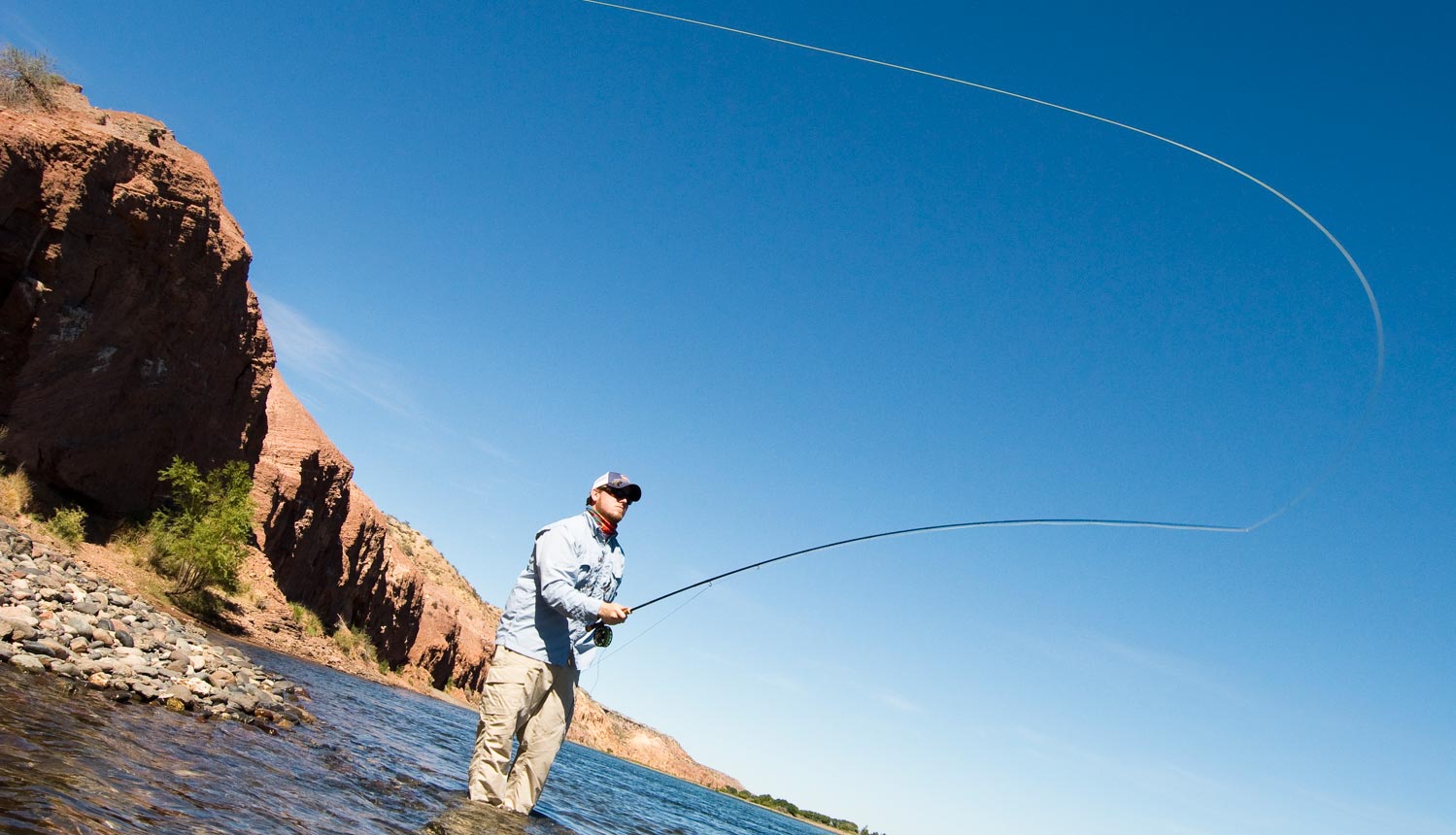
By Louis Cahill
An energized fly line is crucial for a good cast and a good presentation.
The act of casting a fly line is really just a matter of transferring energy. We often use the word throw, as in, “Throwing big streamers,” but that isn’t an accurate description of what we’re doing. Hopefully not anyway. Fly lines don’t careen through the air like a golfball. They unroll in tight graceful loops. Right?
It’s the difference in particle motion and wave motion. We can hit a golfball pretty accurately but once that ball leaves the club we are out of the equation. We no longer influence it’s travel to the target. That’s more like casting a spinning rod. A fly cast is more like a jump rope. The rope continues its orbit as long are we hold tight and put energy into it. If we let go of the rope, it falls to the ground.
We talk about slack in fly casting a good bit. When we introduce slack into the line during the cast, it behaves much like that jump rope. There are several bad habits many fly casters share, which create slack and drain the energy from their casts but in this article I’m going to focus on two which are very common and devastating to a good cast.
Before I get into specifics I will give you this tip. As you cast, you should feel a steady tension on the line with your line hand. Hold the line between your thumb and forefinger and make some false casts. The line should stay straight and taut between your line hand and the stripper guide and the pressure should be pretty constant. This is true whether or not you use a double haul. If your line is slapping around and jerking at your line hand, you need to work on your timing.
The two parts of the cast I want to talk about are the ever-important stops in both your forward and back cast. Whether casting forward or back, the stop is what creates the loop. The thing many anglers don’t realize is
Read More »4 Tips For Stocking Bonefish Flies
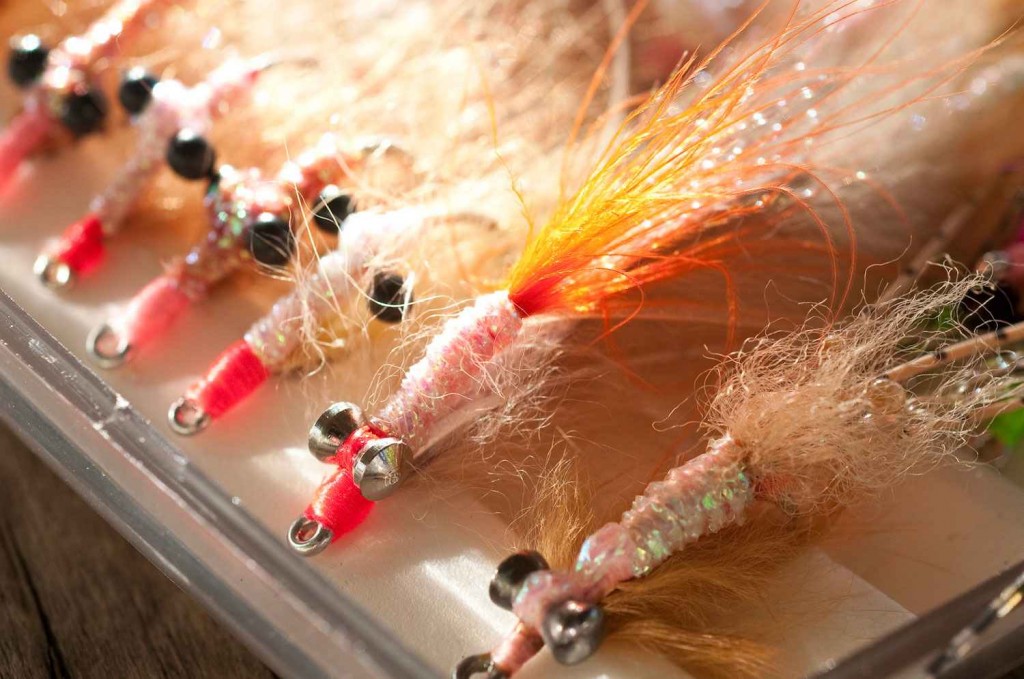
If you’re planning your first bonefish adventure it’s really important that you stock your saltwater fly box with a well rounded selection of fly patterns.
Although bonefish aren’t known for being super selective feeders, stocking the right flies and knowing which pattern to fish in different situations can make a big difference in your success on the water. By far the most important element in bonefishing is fly presentation. Without that, you’re going to miss a lot of shots. Putting that aspect aside with the notion that you understand basic bonefish presentation, let’s talk about some tips for purchasing and tying bonefish flies for your upcoming bonefish trip.
Tip # 1 – Bonefish Flies Should Ride Hook Point Up
Because the mouths of bonefish are located on the bottom of the head and they generally feed down on their prey in most cases, it’s very important that you purchase or tie bonefish flies that ride hook point up when possible. Fishing flies that ride hook point up can increase your hookup rate when bonefish eat, and it will also help to naturally cut down on your flies from snagging on the bottom during the retrieve. Gaze your eyes into a veterans bonefish fly box and you’ll find that most of the fly patterns are tied hook point up, but walk into a store that sells saltwater fly patterns and you’ll be amazed how many fly patterns aren’t tied this way. When you have the choice to tie or purchase your bonefish flies hook point up, I recommend you do so.
Tip # 2 – Bonefish Flies Need to Have Good Movement
Using fly tying materials that have good movement in the water for your bonefish flies is a another way to help you find success. Rabbit strips, marabou, craft fur, and rubber legs are all good examples of tying materials that come to life in the water. I stated before that most bonefish aren’t picky, the key word here is most, but in some situations having a little extra life-like movement in your flies can make a big difference. For instance, a large school of bonefish are going to be less picky on fly pattern choice with competition for food on their minds than a solo bonefish swimming across the flats. Tying or buying bonefish flies that incorporate
Game of Bones, 5 Common Bonefish Behaviors and Successful Strategies
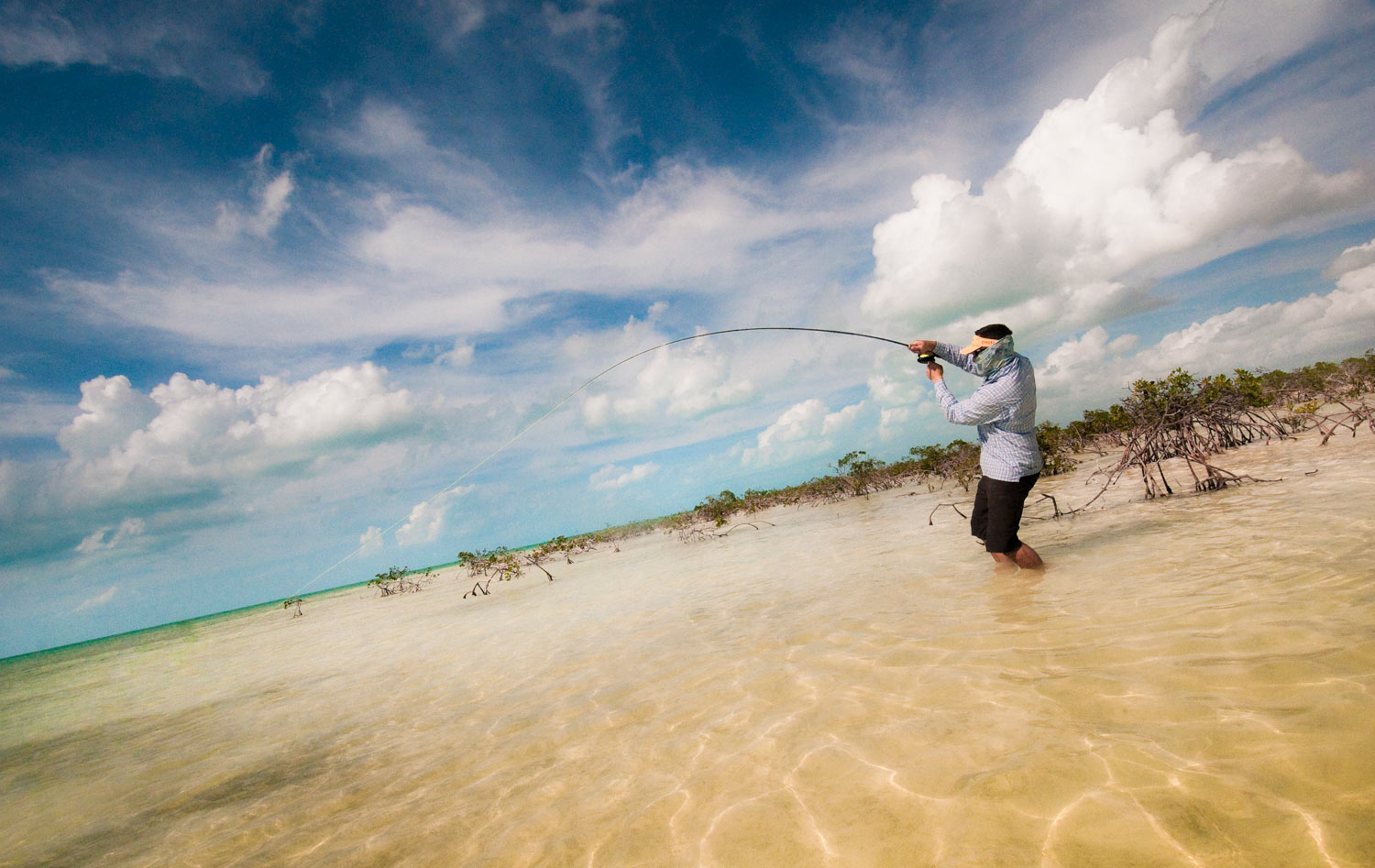
By Louis Cahill
Understanding these 5 common bonefish behaviors will help you catch a lot more fish.
I love bonefishing! There’s a shocker. Every species has unique characteristics which make them fun or challenging to catch. The chess game of feeding a sipping brown trout, the mix of finesse and raw power required to boat a tarpon and the zen of swinging a fly to a fresh steelhead are the parts of the game that hold the reward. One of my favorite games to play is the one we play with bonefish.
They don’t have the power of a tarpon or the mystique of a permit, the romance of a steelhead or the selectiveness of an educated trout, but they remain a challenging and rewarding species. More than the pursuit of any other fish, bonefishing is a game of strategy and tactics. Their vigilance and behavior require the perfect presentation at the exact right time. For me, it never gets old.
I had a day on my last trip to the Bahamas that was just about perfect. We were fishing deep in the backcountry on a high tide. Our guide poled the boat way back onto a flat that was sprinkled with mangroves. Single mangroves, clumps and mangrove islands, sometimes with just enough space to push the boat through. Puffy clouds blew over our heads.
We’d use the mangroves for cover and take sniper-like shots at fish as they approached open areas. The fish would appear and disappear with the sunlight. Everything had to be timed perfectly to get the hookup, and once you did you’d better be ready for a fight. Keeping those fish out of the mangroves takes skill.
That’s just one of the endless scenarios you’ll find when bonefishing. The beauty of the game is that anything can happen. Bonefish can exhibit bizarre behavior and a wise angler expects the unexpected. That said, there are five very common behaviors you will see from bonefish and knowing how to present the fly in these situations will catch you a lot of fish. I’ll give you some guidelines but remember, it’s all about reading the fish’s behavior and adapting. Don’t be afraid to improvise. That’s what makes it fun.
5 COMMON BONEFISH BEHAVIORS AND SOME SUCCESSFUL PRESENTATIONS.
Schooling
It’s very likely that you caught, or will catch, your first bonefish from a school. I’m not talking about small schools that you see roaming the flats but big schools of hundreds or even thousands of fish milling around using their numbers for safety. As you progress in your bonefish education, you get bored with fishing schools but for anglers new to bonefishing they are a golden opportunity. Fishing schools gives you the opportunity to develop skills like the strip set and fish fighting by hooking a lot of fish in a short time.
When they are schooled up, bonefish become more confident. They also become competitive, which gives you big edge. When presenting the fly to big schools
Read More »Chard’s Snapping Shrimp
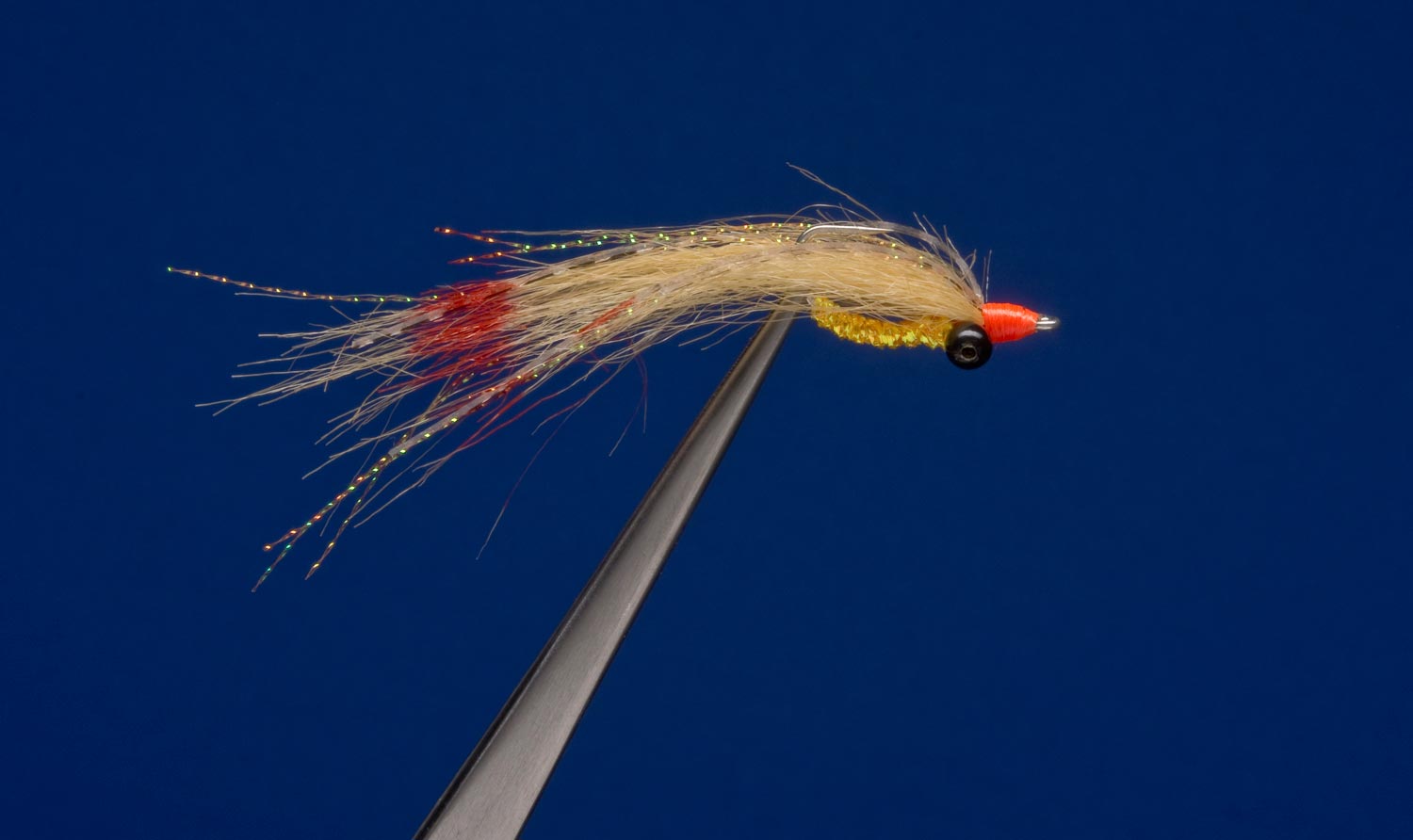
IT’S TIME TO GO TO THE BAHAMAS AND CATCH BONEFISH!
Seriously, I’m going to the Bahamas tomorrow morning for the first week of the G&G Andros South bonefish trip. I can’t wait. And in the box of flies I’m taking along there is a healthy handful of Bruce Chard’s Snapping Shrimp patterns.
This is one of the first bonefish flies I learned to tie and it’s a s productive now as it was then. It’s a versatile little fly that takes almost no time to tie and catches bonefish on any flat in the Bahamas. And plenty of other places I’m sure.
It may be too late for you to go to South Andros with me tomorrow, but it’s not too late to tie some Snapping Shrimp for your next trip.
Watch the video and learn to tie Chard’s Snapping Shrimp.
Read More »Blue Hole Fly-Fishing Setup: Video
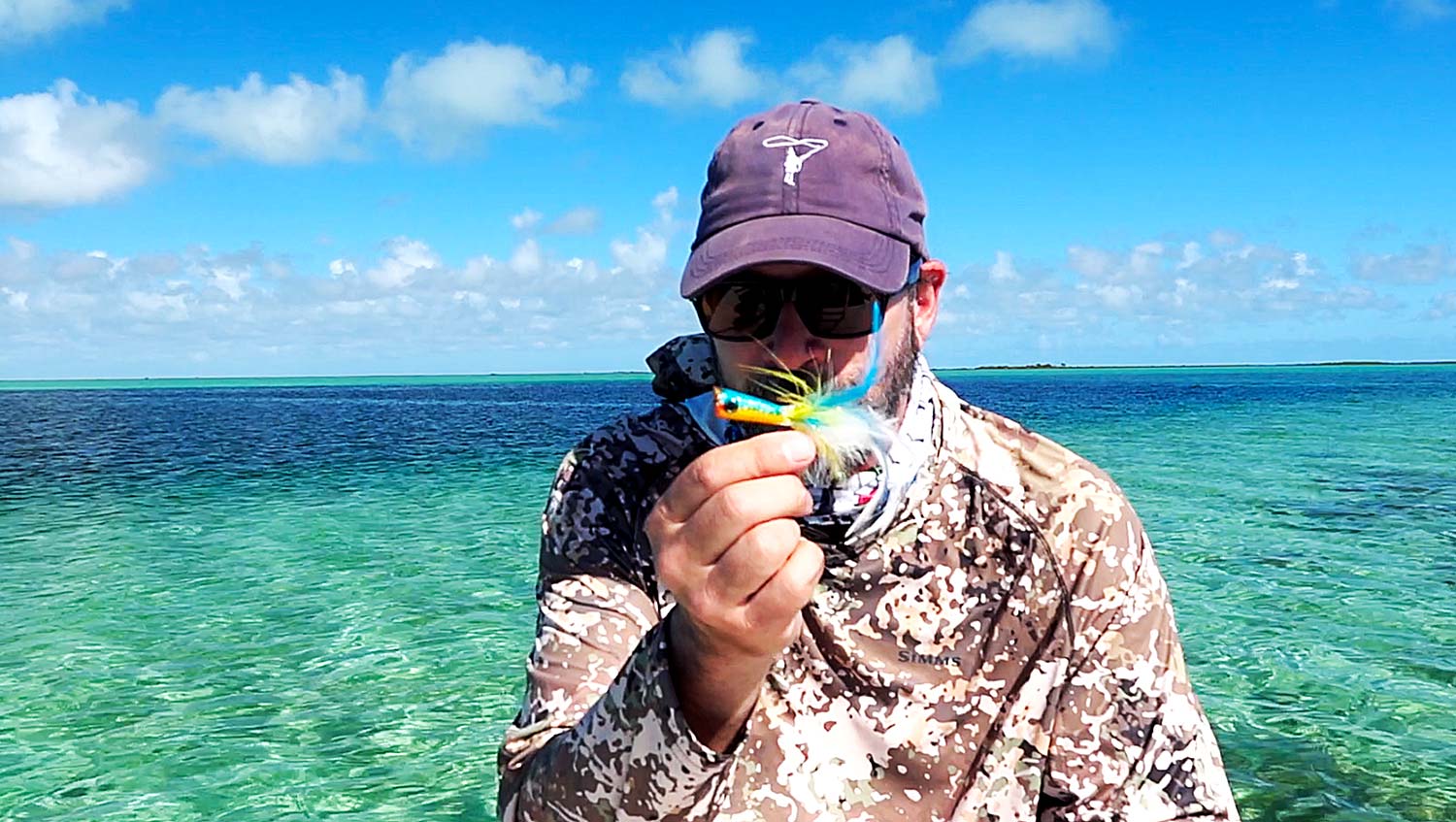
Here’s a simple and incredibly effective setup for catching fish in the blue holes of the Bahamas.
I’m not one of those purist who thinks it’s poor form to deviate from my target species. I like to have fun, and for me, catching different kinds of fish in different ways is part of the experience. One of the coolest things about fishing South Andros, in the Bahamas, is the blue holes. These freshwater vents are perfectly round and can be two-thousand feet deep. South Andros has the highest concentration of them in the world and they are full of fish. You never know what will come out of them.
The problem is, blue holes are really difficult to fish effectively with a fly. Anglers often leave thinking there are no fish there. There are always fish there but, in a two-thousand foot hole, showing them a fly can be tough. I’ve been fishing blue holes for a long time and I have an easy solution to the problem. It takes seconds to set up and catches fish like a net.
WATCH THE VIDEO AND LEARN TO FISH BLUE HOLES EFFECTIVELY, EVERY TIME.
Read More »A Buyers Guide To Flats Skiffs
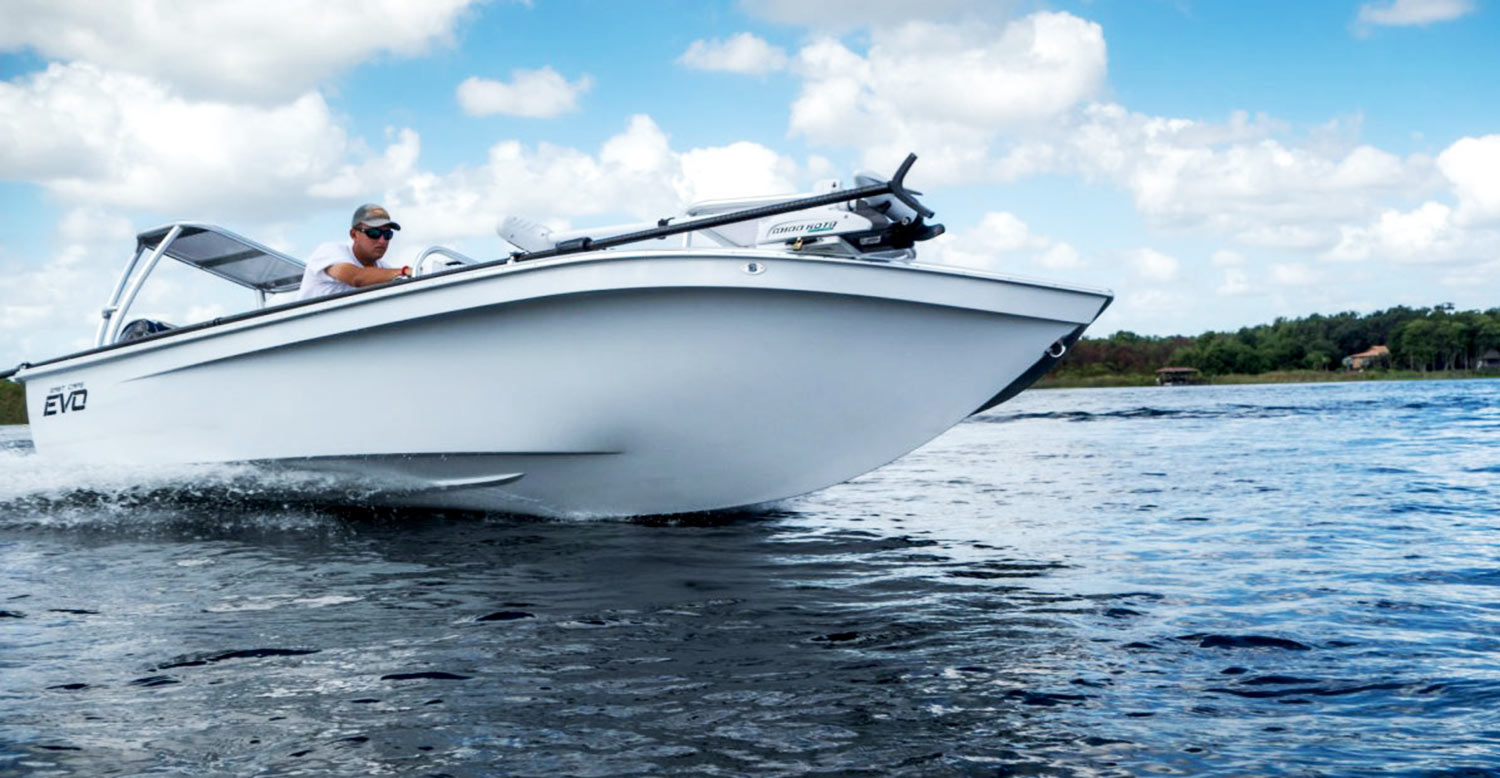
By Owen Plair
As the world of saltwater fly fishing steadily grows, so the does the market for poling skiffs.
There are tons of different flats boat companies out there today and an unreal number of different skiffs to choose from. Each flats boat is designed for a purpose–whether you want to get super shallow, pole deeper for tarpon, or simply have a boat you will only pole on the weekends before picking up the family for a day at the sandbar. Inshore fishing is a lot more affordable and easier than offshore fishing, especially in today’s economy and fuel cost. Be sure that you will use this boat more than 10-12 times of year because it’s often cheaper and always easier to hire a guide than own a skiff.
Steve Seinberg
Steve Seinberg
There are many different types of hulls. Each one is made for a specific kind of fishing, determined by draft and types of water you fish. In short, you want a skiff that will meet your needs in the waters you will be fishing. Write down what your priorities are for your skiff. Things like draft, poling ability, comfort, size, storage, engine, how many people you will have on board, and most importantly price. These are all factors that will help you decide what kind of skiff you will be happy with. Most of all, keep in mind that your wants may not be perfectly met, because no matter how you look at it, there will always be a compromise of one preference to achieve something more important.
DO YOUR RESEARCH:
One great asset when buying a flats boat is the internet. There are endless places to shop and get a feel for the flats boat market. Boat Trader, dealer websites, forums, and even Craigslist. Once you have an idea of the boat you’re interested in, start Googling for forums and articles about that certain boat. Websites like Micro Skiff and Skinny Skiff have good information on different poling skiffs. Another great trick is to look for the skiffs guides are using in your area. These guides make a living on their skiffs, and have plenty of good information from personal use. I always recommend going out with a guide who runs the skiff you’re looking at. Not only get more information about the skiff but actually fish on the boat.
THE TECHNICAL SKIFF:
DSC04420-1200x800The term “Technical” is used a lot in the flats boat industry. Mostly referring to skiffs that are designed for the angler who wants the absolute best performance when poling, fishing, and running. This is the badass side of the skiff market and usually the most expensive because of how they are built and how they perform on the water. People sometimes complain about how expensive these skiffs can be, but there is a reason they cost $35-60K for a brand new 17ft boat. Companies like Maverick Boat Company, Hells Bay Boatworks, East Cape Skiffs, Chittum, Beaver Tail, Dolphin, and other big names put a lot of time in research and development. These technical skiffs are designed and built for fishing the flats just like a Lamborghini is built for going fast. The history behind these skiffs is amazing and it’s truly unbelievable how much technology has been developed over the last 20 years. It all started with a boat to get you and your angler shallower, and closer to the fish in their natural environment.
GLIDE-2015-30-SUZUKI-ICE-BLUE-TILLE-PERRY-MCDOUGALD-EAST-CAPE-SKIFFS-BOAT-IMAGE-GALLERY-CUSTOM-BOAT-BUILDER-FISHING-SKIFF-MANUFACTURER-119fcb36b4-1200x884Size is a key factor for a technical skiff. These are skiffs between 15-18ft and draft between 4-8 inches of water. They are small, lightweight, and made for poling in shallow waters. Anywhere from 6 inches of water for tailing fish or 10ft of water for migrating tarpon. These are not boats to take a bunch of people on and usually have a limit of 2-3 people max. They are often a tad tippy when walking around but again they are designed to have a person on the bow casting, the other sitting on the cooler, and someone on the tower poling. The way these skiffs perform in their desired fisheries is what makes them “Technical” and they are one of the most important tools in saltwater fly fishing.
Lots of other factors come in to play.
Read More »